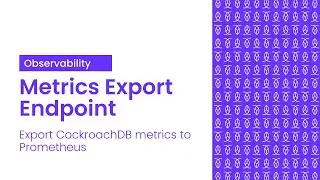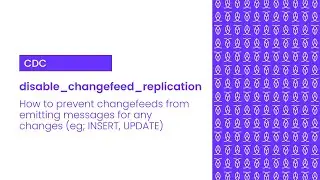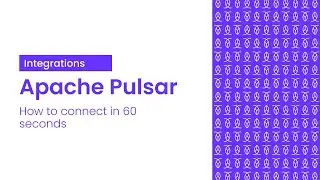Spatial Data Types | Spatial Data Use Cases | Spatial Databases
In this video Andy Woods, a senior product marketing manager at Cockroach Labs, explains the basics of spatial data types, then gives examples of spatial data use cases and ultimately shares the best spatial databases.
00:00 Examples of spatial data
00:56 What is spatial data
1:09 What are the spatial data types
1:12 What is geographic data
1:35 What is geometric data
1:52 Spatial Data Use Cases
1:53 Using spatial data with Internet of Things
2:40 Using spatial data with environmental technology
3:18 What are the spatial databases?
3:20 Is CockroachDB a spatial database?
What is Spatial Data
Spatial Data, often referred to as geospatial data, is any data that contains information about a specific location. In layman's terms, spatial data is data about location.
The two primary spatial data types are Geometric and Geographic data.
• Geographic data is data that can be mapped to a sphere (the sphere in question is usually planet earth). Geographic data typically refers to longitude and latitude related to the location of an object on earth. GPS data is a good example of geographic data.
• Geometric data is data that can be mapped to a two-dimensional flat surface. A good example of geometric data would be the floor plan of a building.
Examples of Spatial Data Applications, Use Cases, and Workloads
IoT Applications & Spatial Data
• IoT Platform Analytics: Spatial data is the data that shows where users are signing into an application or, to reference the Bird example, accessing a scooter.
• Real-Time Sensor Detection: This is spatial data on your Fitbit tracking how far you ran (or didn’t run) today.
• Personalized Views: Google maps knows where you are, and it knows you like Thai food and Mexican food. It can serve you an ad based on your location and the fact that you have a crippling affection for Taco Bell.
Transportation/Logistics Applications & Spatial Data
• Operations Research: Spatial data knows which machine type will work best in a certain location based on the topographical characteristics of a location as well as the surrounding conditions like temperature and traffic.
• Supply Chain Management: Spatial data can estimate how fast a person or a product will get from point A to point B.
• Real-Time Analytics: Spatial data can tell you where in the world your latest shipment of olive oil is.
Environmental Technology Applications & Spatial Data
• Flood Risk Analysis: Spatial data keeps track of areas that are particularly susceptible to flooding by combining the geographic data with weather data and historical data.
• Real-Time Natural Disaster Detection: Spatial data can help predict where a wildfire will spread by capturing its current location and then factoring in the wind speed/direction as well as the objects that lay in its path.
• Farming/Irrigation Management: Spatial data can record which areas of a farm have been serviced or not serviced by the machines used for planting, harvesting, pruning, or irrigating.
These are just a few examples of how spatial data is used in the real-world. There are tons of other use cases for spatial data that relate to urban planning, or fraud detection, geomarketing, civil engineering, and more.
How to build with Spatial Data
When you talk spatial data you have to talk PostGIS. PostGIS is the spatial database extension for PostgreSQL. It has over 300 different built-ins and functions to make it easier to work with spatial data. PostGIS has helped launch apps like Instagram and FourSquare and is included in the tech stack for countless other applications.
Until very recently Spatial Data workloads could not reliably be built on any of the truly distributed databases. But that isn’t the case anymore. CockroachDB, the cloud-native distributed SQL database, now supports spatial data types. Rather than reinvent the wheel, CockroachDB uses the same PostGIS compatible SQL syntax. So you can build applications that leverage spatial data on a database that’s always on, easy to scale, and simple to use.
Deploying spatial data workloads on a distributed database, rather than a monolithic database means that reads and writes aren’t routed through a single node and you don’t have to do asynchronous replication across multiple sites. And when it’s time to scale to different regions you don’t have to worry about manual scaling responsibilities.
If you have questions about spatial data you can ask them in the CockroachDB community slack. If you want to learn more about deploying distributed spatial data workloads you can look at our spatial features support documentation.
Links:
Free Distributed Spatial Data: https://www.cockroachlabs.com/blog/sp...
Working with Spatial Data: https://www.cockroachlabs.com/docs/v2...
Spatial Data GLossary of terms: https://www.cockroachlabs.com/docs/v2...
Spatial Data Features: https://www.cockroachlabs.com/docs/v2...































